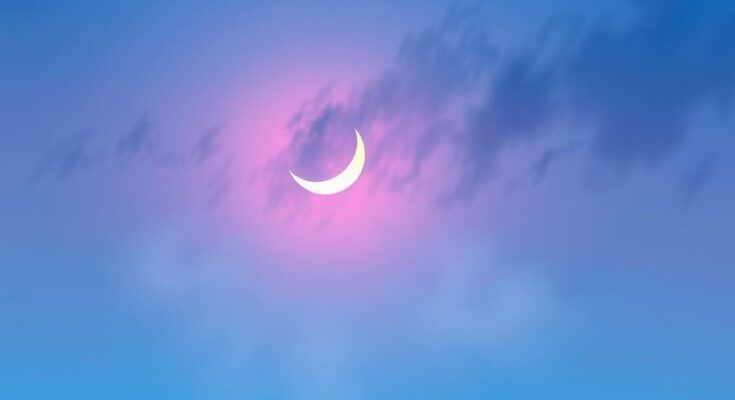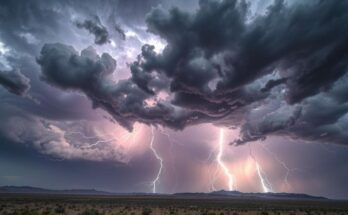A partial solar eclipse will take place this weekend, visible in Europe, parts of North America, and Africa. Experts emphasize the need for protective eyewear. Optimal viewing varies by region, and alternative methods can be utilized for safe observation. Future eclipses are also scheduled for September.
This weekend, a partial solar eclipse will occur, captivating viewers across Europe, parts of North America, and Africa. During this event, the moon will partially obscure the sun, creating a crescent-like appearance. Observers in the northeastern United States, Greenland, and eastern Canada will experience the most significant visual effects.
As the moon moves between the sun and Earth, it casts a shadow that only partially blocks sunlight, distinguishing it from a total solar eclipse where complete obscuration occurs. Experts stress the importance of wearing appropriate eye protection throughout the eclipse to prevent damage to sight. “Eclipses are just a game of light and shadow that are played by the sun, moon and Earth,” notes Auriane Egal from the Planetarium in Montréal.
According to NASA, solar and lunar eclipses take place four to seven times annually, often in pairs. Following a total lunar eclipse that painted the moon red in mid-March, this partial solar eclipse provides another astronomical event for enthusiasts. Remote viewing times vary: early morning for the Americas, late morning for western Europe and Africa, and afternoon for eastern Europe and northern Asia.
As the eclipse unfolds, expect the sun’s visibility to wane, creating dimmer conditions akin to a cloudy day. Juan Carlos Muñoz-Mateos of the European Southern Observatory remarks, “It will feel like a particularly cloudy day.” To ensure the best viewing experience, individuals are advised to monitor weather conditions and seek dark areas away from urban lighting.
Observers should prepare by obtaining eclipse glasses from local science museums or approved online retailers listed on the American Astronomical Society’s website. Alternative indirect methods for viewing include constructing a pinhole projector or using a colander. Additionally, viewing the ground beneath a leafy tree can reveal crescent-shaped shadows as sunlight filters through.
Another set of eclipses, including a total lunar eclipse and a partial solar eclipse, is anticipated in September, with prime viewing locations in Antarctica and New Zealand.
In summary, the upcoming partial solar eclipse presents a unique opportunity for viewers across multiple continents. Proper eye protection is crucial throughout the event, and individuals should look for optimal viewing conditions to fully appreciate the spectacle. Alternative viewing methods can also enhance the experience. Eager observers should prepare in advance, as additional eclipsing events will occur later in the year.
Original Source: apnews.com




